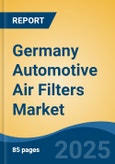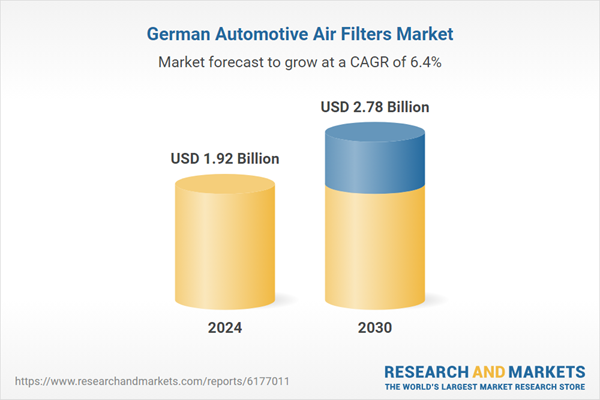Speak directly to the analyst to clarify any post sales queries you may have.
10% Free customizationThis report comes with 10% free customization, enabling you to add data that meets your specific business needs.
Automotive air systems, including intake and cabin air components, play a critical role in ensuring optimal combustion efficiency, reducing emissions, and enhancing passenger comfort. As OEMs and Tier 1 suppliers push for reduced engine weight and improved air filtration, the integration of lightweight materials and intelligent airflow management systems has become central to vehicle design. Automakers are also focusing on the development of compact, modular air systems to suit diverse vehicle platforms and configurations, supporting long-term scalability and efficiency.
Fuel efficiency norms and tightening CO₂ emission targets under Euro 6 and upcoming Euro 7 standards are encouraging manufacturers to improve air intake and filtration systems. The growing preference for turbocharged and high-performance engines has increased demand for high-efficiency air filters and thermal management technologies. Advanced filtration solutions that capture finer particulates and reduce engine wear are gaining prominence. In-cabin air quality has also emerged as a key differentiator, with consumers valuing features like HEPA filters and smart air purification systems, particularly in urban areas with high pollution levels. Integration of sensors and AI-enabled climate control systems into air modules is becoming a common trend, reflecting the shift towards connected and smart mobility solutions.
Challenges in the market include fluctuating raw material prices, increased production costs due to the adoption of advanced technologies, and the need for continuous innovation to meet regulatory and consumer expectations. Suppliers face pressure to deliver cost-effective solutions without compromising on quality or performance. While the industry offers opportunities for differentiation through innovation in materials, airflow dynamics, and sustainability, competition from low-cost imports and the high pace of regulatory changes can create uncertainty. Nonetheless, rising consumer awareness about health and environment, along with the push for premium in-cabin experiences and greener vehicle technologies, is expected to support steady growth in the Germany automotive air filters market.
Market Drivers
Shift Toward Fuel-Efficient Powertrains
The transition to smaller, turbocharged engines across Germany’s automotive landscape is driving demand for highly efficient air intake systems. These engines require precise air-fuel mixture control to optimize combustion. Modern air systems must deliver high airflow with minimal resistance, encouraging innovation in intake manifold design, filter performance, and airflow routing. Turbocharged vehicles, in particular, benefit from optimized intake air systems that enhance power without sacrificing fuel economy.As manufacturers move away from large displacement engines, the reliance on air system efficiency as a performance lever is increasing, propelling consistent demand in the market. Lightweight intake manifolds, advanced filter geometries, and dual-channel airflow systems are seeing rapid adoption. Automotive engineers are now prioritizing aerodynamic duct designs that reduce drag inside the intake channel. Innovations in software-driven airflow simulation are helping refine these systems for maximum power delivery.
Key Market Challenges
High Cost of Advanced Materials and Components
The use of premium polymers, HEPA filter media, and integrated sensors increases production costs for advanced air systems. OEMs demand high performance without passing costs to end users, squeezing supplier margins. Material availability, especially for high-grade filter paper and temperature-resistant plastics, can fluctuate and disrupt supply chains.This cost challenge affects pricing strategies, profit margins, and the scalability of innovations across vehicle segments. Manufacturers must balance innovation with affordability, especially in volume-driven markets like compact and mid-size vehicles. Smaller suppliers often struggle to meet pricing targets for bulk orders. Tier 1 vendors are investing in local material substitutes to stabilize costs. R&D budgets are being redirected toward cost-effective alternatives without compromising efficiency.
Key Market Trends
Rising Popularity of Active Carbon and HEPA Filters
Modern automotive air systems are shifting from basic paper filters to activated carbon and HEPA technologies that capture finer particles and eliminate odors. These filters are becoming a standard feature in both premium and mid-range vehicles. The ability to block allergens, dust, bacteria, and fumes enhances driver and passenger wellbeing. The trend is also being fueled by consumer health awareness and expectations for a cleaner, quieter ride. Filter replacement alerts and maintenance apps are being introduced to ensure consistent performance over time. Many models now include dual-layer filtration systems for enhanced depth filtering. Recyclable HEPA modules are under development to support sustainability goals. Smart indicators on dashboards track real-time filter saturation.Key Market Players
- ACDelco Corporation (General Motors Company)
- ALCO Filters Ltd
- Robert Bosch GmbH
- Cummins Inc.
- DENSO Corporation
- Donaldson Company Inc.
- MAHLE GmbH
- Mann + Hummel GmbH
- Sogefi SpA
- Parker Hannifin Corp
Report Scope:
In this report, the Germany Automotive Air Filters Market has been segmented into the following categories, in addition to the industry trends which have also been detailed below:Germany Automotive Air Filters Market, By Type:
- Air Intake Filters
- Cabin Air Filters
Germany Automotive Air Filters Market, By Vehicle Type:
- Passenger Cars
- Commercial Vehicles
Germany Automotive Air Filters Market, By Region:
- South-West
- North-West
- North-East
- South-East
Competitive Landscape
Company Profiles: Detailed analysis of the major companies present in the Germany Automotive Air Filters Market.Available Customizations:
With the given market data, the publisher offers customizations according to the company’s specific needs. The following customization options are available for the report.Company Information
- Detailed analysis and profiling of additional market players (up to five).
This product will be delivered within 1-3 business days.
Table of Contents
Companies Mentioned
- ACDelco Corporation (General Motors Company)
- ALCO Filters Ltd
- Robert Bosch GmbH
- Cummins Inc.
- DENSO Corporation
- Donaldson Company Inc.
- MAHLE GmbH
- Mann + Hummel GmbH
- Sogefi SpA
- Parker Hannifin Corp.
Table Information
| Report Attribute | Details |
|---|---|
| No. of Pages | 85 |
| Published | September 2025 |
| Forecast Period | 2024 - 2030 |
| Estimated Market Value ( USD | $ 1.92 Billion |
| Forecasted Market Value ( USD | $ 2.78 Billion |
| Compound Annual Growth Rate | 6.4% |
| Regions Covered | Germany |
| No. of Companies Mentioned | 10 |









